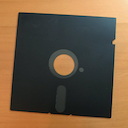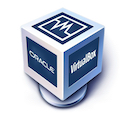Techstream
 Buy me a coffee
Buy me a coffee
-

Tuning Graphite - Version 0.9.15
(Version 0.9.15) Tutorial related to an experience attempting to tune and understand metrics related to a Graphite instance on an Ubuntu 16.04 virtual machine. These details are related to attempting to drive conclusions about a single graphite/carbon setup in AWS, and assume that the Graphite stack is already up and running.
-

Installing Graphite - Version 0.9.15
(Version 0.9.15) Tutorial related to the installation and configuration of Graphite on an Ubuntu 16.04 virtual machine. Note that these instructions follow the “Install using pip” process from the documentation in an attempt to avoid dependency issues among Python packages (although as seen in the instructions, some versions are specifically required in order for the setup to function on the Ubuntu system).
-

Graphite Metrics (Somewhat) Explained
In my quest to figure out how to tune Graphite, it became very quickly apparent that a good source explaining what each Carbon Cache metric stands for in the cache reporting was lacking. I found this particular source, which I’m detailing below for reference:
-

Add Carbon Relay to Graphite
Tutorial related to expanding on on the initial Graphite installation approach here and adding a Carbon Relay instance to send metrics to multiple Carbon Cache instances.
-

Installing Kafka
Tutorial related to the installation and configuration of Kafka on an Ubuntu 16.04 virtual machine. The instructions and tutorial include setting up the dependent components (ZooKeeper, etc) as well as testing and interacting with the Kafka instance.
-

Installing Statsd for Graphite
Tutorial related to the installation and configuration of Statsd on an Ubuntu 16.04 virtual machine. Note that these instructions follow the “Install from Source” process from the documentation in order to facilitate the highest level of configurability.
-

Installing Graphite - Bleeding Edge (0.10)
(Version 0.10) Tutorial related to the installation and configuration of Graphite on an Ubuntu 16.04 virtual machine. Note that these instructions follow the “Install from Source” process from the documentation in order to facilitate the highest level of configurability, and assume the “bleeding-edge” version at the time of this post (version 0.10, which is still currently in development).
-

Adding Space to Existing LVM Setup
Useful commands/hints in extending an LVM partition to add disk space to an existing virtual machine. This is especially useful if you do not wish to add an extra drive or have software/data that is being written to an existing partition that is not easily re-configurable.
-

-

Simple NFS
Simple tutorial (very basic) on how to install and configure NFS for sharing a file system between two hosts. This tutorial does not go into detail about the many capabilities of NFS but, rather, is a proof of concept exercise.
-

OSX - Reading/Writing NTFS Drive
NTFS drives are common given the number of Windows devices in the technology ecosystem. However, Mac OSX (at the time of this post) does not have an easy way to read/write to/from an external NTFS drive. These instructions explain how to work around the issue of not being able to interact with an NTFS drive on OSX.
-

Useful JMX/JConsole Information
Somewhat related to an earlier Java post here, this post is dedicated to useful JConsole information that does not warrant their own posts (too short, not enough information, etc). As before, Platform is specified to indicate the platform the process was tested on, but the process will very likely work on other platforms as well.
-

Using ovftool for Disk Conversion
Simple example on how to use the VMware OVF Tool to convert Virtual Machine disk image formats.
-

Adding a Drive to a Vagrant VM
Often times I’ve created Virtual Machines using Vagrant, but simply forgot to associate an additional disk/volume for storing information. This is a quick process to attach a volume to an already-created VM that was created using Vagrant and lives in the VirtualBox hypervisor.
-

SSH Tunnel
Often it is useful to have a “jump host” between zones on your network to help with segregating various security domains (i.e. PCI). However, this can be cumbersome for system administrators to access the hosts using the jump host due to the multiple SSH commands needed to be run. This is a simple SSH tunnel implementation to avoid the unnecessary “2-hop” jump host.
-

PostgreSQL Commands and Sockets
Collection of commands and information related to interaction with a PostgreSQL database. These are likely rudimentary but are useful for needing to remember them after not having worked with the database for some time.
-

Useful Java Information
A collection of useful information related to Java debugging, troubleshooting, and general use of products that run in a JVM. None of the commands/procedures warrant their own post (too short), so this simply aggregates a bunch of useful blips of information into a single post. Platform is specified to indicate the platform the process was tested on, but the process will very likely work on other platforms as well.
-

Ruby LDAP Authentication
Quick code snippet related to authenticating users in Ruby using an LDAP endpoint. Note that this authentication snippet is very basic (successful bind operation is all that is required).
-

X11 Forwarding from Mac OSX to Linux
To enable GUI interaction with a Linux VM over SSH from a Mac OSX instance, X11 forwarding can be used. The following are steps to install, configure, and run tools/commands related to establishing GUI sessions with remote Linux instances (assuming they allow it/X11 forwarding is not explicitly disallowed by the SSH settings on the VM or a remote firewall).
-

Linux Screen Sharing Using Screen
To share a screen session (screen is a Linux-based software package which allows multiple TTY sessions under the same console window) with a fellow developer/other, the following commands can be useful.
subscribe via RSS